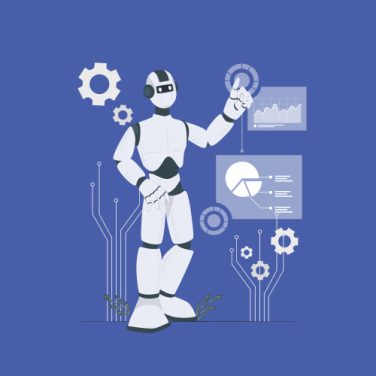Traditionally, recruiters manually sift through hundreds or thousands of resumes, a time-consuming process prone to human error and inconsistency. With AI resume screening, resumes are ingested in bulk, parsed instantly, and ranked objectively. This shift accelerates the initial review phase and ensures that every candidate is evaluated against the same criteria.
Core components of AI resume screening include NLP engines that tokenise text and identify entities, supervised learning models trained on historical hiring data, and customisable rule-based systems for compliance and screening thresholds. Together, these elements deliver a scalable solution that adapts to evolving job requirements and organisational policies.
The typical workflow begins when a recruiter uploads a job description into an AI resume screening platform. Resumes are parsed, relevant data points are extracted, and each applicant receives a relevance score. Top-ranked candidates are passed to an ATS or HRIS for further actions such as interview scheduling or automated communications.
Use cases for AI resume screening span high-volume hiring drives, diversity and inclusion initiatives, remote and global recruitment, and seasonal or event-based recruitment. By standardising and speeding up the screening process, organisations can improve quality of hire, reduce time-to-fill, and enhance the overall candidate experience.
Types of AI used in resume screening
AI resume screening encompasses a variety of techniques, each suited to different screening objectives:
- Keyword-based screening: Matches specific terms in resumes against the job description. Common in basic screening tools and often available in AI resume screening free versions.
- Statistical and machine learning approaches: Use historical hire and performance data to build predictive models. Candidates receive predictive scores based on factors correlated with successful hires.
- Grammar and semantic analysis: NLP techniques detect context, sentiment, and writing quality. This approach reduces false positives by understanding the nuance behind phrases.
- Deep learning models: Neural networks perform resume parsing, entity recognition, and pattern extraction across document formats. Deep models continuously improve as more data is processed.
- Hybrid systems: Combine rule-based filters with learning-based models to balance explainability and accuracy. Organisations seeking to minimise AI resume screening bias often adopt hybrid architectures.
Each type of AI resume screening technology brings distinct advantages. Keyword-based systems are straightforward and cost-effective, making them ideal for small organisations or initial pilot programmes. Machine learning models deliver higher precision by learning from past hiring outcomes, while semantic analysis adds depth by interpreting candidate intent and communication style.
Deep learning solutions represent the cutting edge, offering comprehensive parsing of complex resume formats and adaptability across languages. Hybrid systems integrate the transparency of rules with the predictive power of machine learning, delivering a balanced approach for enterprises that require both accuracy and auditable processes.
Understanding the strengths and limitations of each ai resume screening type allows HR professionals and recruitment managers to select the right solution for their hiring goals, whether that’s a basic free screening tool or an enterprise-grade platform with advanced analytics.
Benefits of AI resume screening
AI resume screening offers multiple benefits that transform candidate selection:
- Time savings: Automates the initial review of resumes, reducing screening time by up to 70%. Recruiters can focus on interviewing and candidate engagement.
- Improved accuracy: Consistent, data-driven evaluations eliminate manual errors and subjectivity.
- Enhanced objectivity: Standardised scoring mitigates unintentional bias, supporting diversity initiatives.
- Scalability: Processes thousands of applications in minutes, ideal for high-volume or global hiring.
- Better candidate experience: Faster feedback loops keep candidates informed and engaged.
- Actionable metrics: Analytics on time-to-hire, pipeline drop-off rates, and diversity stats support continuous improvement.
Overall, AI resume screening not only accelerates hiring cycles but also elevates recruiter effectiveness and candidate satisfaction, making it a valuable addition to modern talent acquisition strategies.
Limitations and risks of AI screening
While AI resume screening delivers significant advantages, it also introduces limitations and risks that organisations must address:
- Potential for bias: Screening models trained on historical data may perpetuate existing demographic imbalances, leading to unfair outcomes.
- False positives and negatives: Algorithms can over-rank unqualified candidates or exclude qualified applicants, especially when resumes contain unconventional formats or missing keywords.
- Lack of transparency: Opaque algorithms challenge explainability, making it difficult for recruiters to understand scoring decisions and defend compliance audits.
- Dependence on resume quality: Poor formatting, nonstandard fonts, or scanned documents can hinder accurate parsing, resulting in data omissions.
- Regulatory and ethical considerations: Compliance with GDPR, CCPA, EEOC guidelines, and emerging AI regulations requires careful data handling and audit trails.
Organisations must recognise that AI resume screening tools are not infallible. Overreliance on automated scores without human review can lead to missed talent opportunities. Moreover, failure to maintain clear documentation on model design and data sources may expose companies to legal and reputational risks.
To manage these limitations, recruitment teams should implement robust testing protocols before deployment. Benchmarking models against blind accuracy tests and comparing performance to manual screening results can reveal gaps. Regular calibration of rule sets and retraining of machine learning models help ensure ongoing accuracy as job requirements evolve.
By pairing AI resume screening with human oversight and transparent governance processes, organisations can harness the benefits of automation while minimising the risks associated with bias, data quality, and compliance.
Strategies to mitigate bias in AI screening
Mitigating AI resume screening bias requires a multifaceted approach that combines technology, data governance, and human oversight:
- Audit and monitoring: Regularly analyse algorithmic outcomes for demographic disparities. Use statistical tests and dashboards to uncover skewed acceptance rates.
- Diverse training datasets: Incorporate balanced representation across gender, ethnicity, and background. De-identify candidate data by removing names, photos, and addresses during model training.
- Fairness constraints: Implement bias detection tools and fairness-aware algorithms that enforce equal opportunity thresholds.
- Human-in-the-loop checkpoints: Integrate manual reviews at critical decision points. Recruiters should validate automated shortlists before moving candidates forward.
- Continuous monitoring: Leverage built-in dashboards to track diversity metrics and model performance over time. Set alerts for any deviation from target fairness goals.
In practice, organisations can establish a bias mitigation framework by defining clear fairness objectives, selecting appropriate metrics (e.g., disparate impact ratio, equal opportunity difference), and assigning ownership for ongoing monitoring. Transparency is key: document data sources, feature selection processes, and model retraining schedules.
Collaborating with legal and compliance teams ensures that ai resume screening implementations align with regulatory requirements such as GDPR and EEOC guidelines. Periodic external audits by third-party experts can validate that screening models operate fairly and ethically.
By combining technical safeguards with organisational governance and leveraging MiHCM Data & AI’s analytics capabilities, recruiters can reduce AI resume screening bias and build a more inclusive hiring process.
Best practices for candidates to optimise for AI screening
Candidates can improve their chances of clearing the AI resume screening stage by following these best practices:
- Use clear, keyword-rich headings that match the job description. Align terms such as “project management,” “data analysis,” or “customer success” with the language used in the posting.
- Prefer standard file formats like PDF or DOCX and maintain simple, linear layouts. Avoid complex columns or tables that may confuse parsing engines.
- Exclude graphics, logos, and unusual fonts. AI resume screening systems rely on text extraction and may misinterpret visual elements.
- Include quantifiable achievements and metrics. Phrases like “increased sales by 25%” or “reduced onboarding time by two weeks” provide clear indicators of impact.
- Incorporate both acronyms and full terms for key skills (e.g., “CRM” and “Customer Relationship Management”). This dual listing improves match rates across different screening algorithms.
- Test resumes through free online ai resume screening tools before applying. Early feedback helps identify parsing errors, missing sections, or keyword gaps.
By tailoring resumes for automated parsing without compromising readability for human reviewers, candidates can navigate ai-driven recruitment workflows more effectively. A well-structured resume aligns with screening criteria and highlights the most relevant experience, improving overall rankings.
Adopting these practices reduces the risk of being filtered out due to technical parsing issues or keyword mismatches. Candidates who optimise for ai resume screening demonstrate both attention to detail and an understanding of modern talent acquisition processes, giving them a competitive edge.
For an in-depth overview of automation best practices and advanced integrations, refer to the ultimate guide to AI recruitment solutions automation.
Addressing data security, privacy, and scalability
Data security and privacy are paramount when deploying AI resume screening at scale. Key aspects to keep in mind are:
- End-to-end encryption
- Regulatory compliance
- Secure payment processing
- Horizontal and vertical scaling
- Global language support
Privacy controls allow administrators to configure data access policies, define retention periods, and manage consent records. Audit logs capture every action—from resume ingestion to score generation—providing full transparency for compliance audits.
Horizontal scaling distributes workloads across multiple zones, while vertical scaling optimises compute resources for peak processing demands. As application volumes grow, QA teams can simulate real-world hiring events to validate latency and throughput metrics.
By combining strong encryption, compliance-driven data governance, and elastic scalability, organisations can confidently deploy ai resume screening globally, ensuring both candidate privacy and operational resilience.
Comparing top AI resume screening tools (free vs. paid)
When evaluating AI resume screening solutions, recruiters must weigh features, cost, and scalability. Below is a comparison of key tool categories:
Free tools
- Basic keyword matching and Boolean search.
- Limited file format support (often only PDF or DOCX).
- No advanced bias detection or predictive scoring.
- Manual follow-up required for candidate outreach.
Paid platforms
- Advanced NLP parsing with semantic and sentiment analysis.
- Machine learning-based ranking and predictive scoring.
- Built-in ai resume screening bias detection and fairness constraints.
- Seamless integration with ATS/HRIS via API.
Language support varies by vendor. Cost structures can range from free plans suitable for small teams to enterprise licenses costing several thousand dollars per year. However, organisations often realise ROI through time saved (up to 70%), reduced time-to-hire, and improved quality of hire.
For recruiters focused on enhanced candidate experience with faster feedback loops, paid platforms and enterprise suites deliver the most comprehensive feature sets.
The future of candidate selection with AI screening
AI resume screening has become mainstream in HR technology, delivering faster and fairer candidate evaluations. Integrated platforms like MiHCM solutions provide end-to-end value by unifying screening, analytics, and onboarding within a single ecosystem.
Continuous monitoring and human-in-the-loop practices ensure that automated models remain transparent, explainable, and aligned with ethical standards. As AI resume screening bias mitigation tools mature, organisations will achieve greater diversity and inclusion while maintaining efficiency.
The next frontier lies in predictive analytics for candidate success and retention. By leveraging workforce performance data and machine learning, AI resume screening platforms will evolve from shortlisting tools to strategic workforce planning engines. This shift will empower HR leaders with foresight into talent pipelines, skills gaps, and hiring ROI.
Ultimately, the fusion of MiHCM’s HR analytics, Data & AI capabilities, and SmartAssist resume screening transforms candidate selection into a dynamic, data-driven discipline, positioning organisations to compete effectively for top talent in an increasingly digital recruitment landscape.



